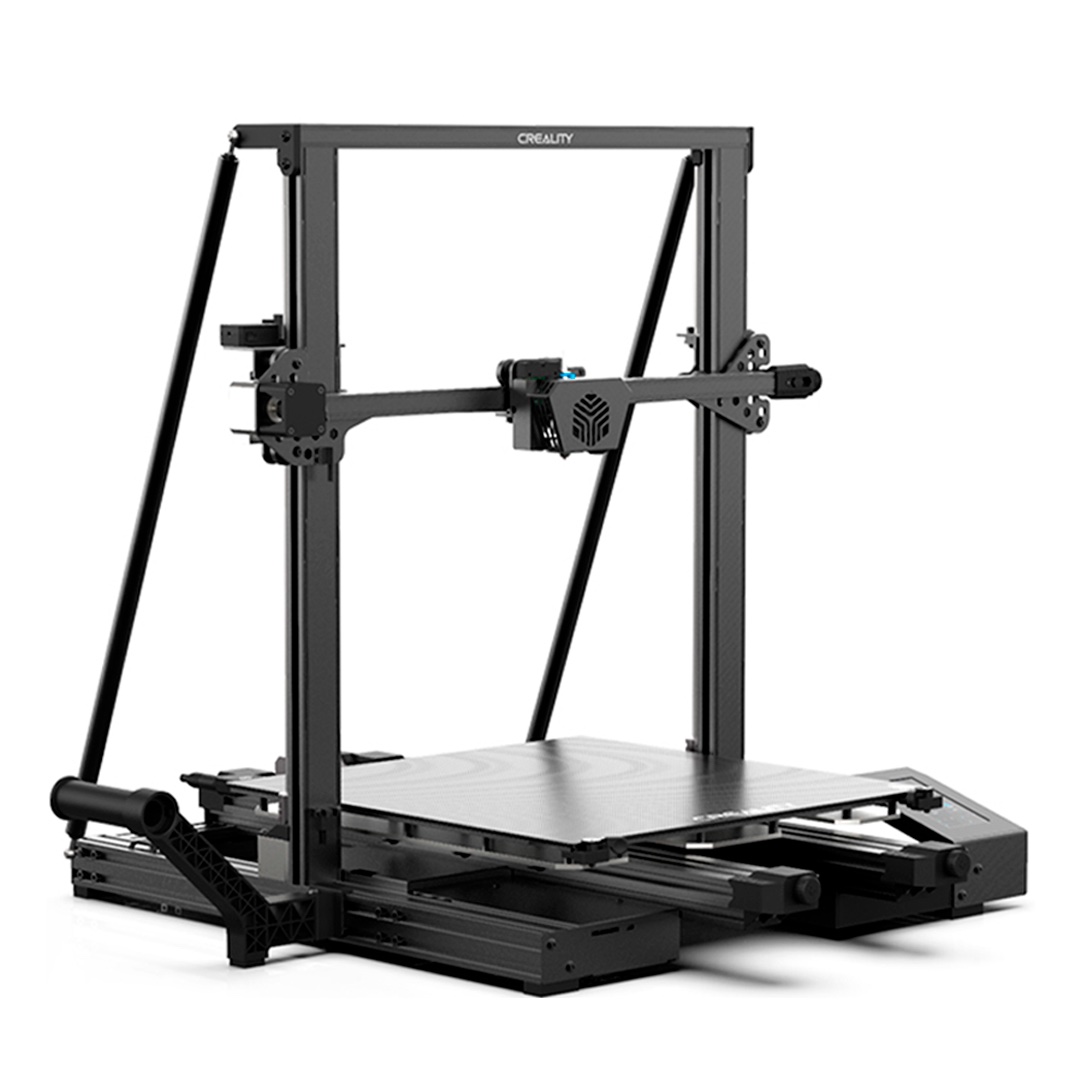Compare H2D vs CR 6 Max
Comparison between the best 3D printers
Choose the best 3D printer at the best price. The cheapest 3D printers are here.
Buy a 3D printer here with 3D Fila.
 |
 |
|
| Model | H2D |
CR 6 Max |
| Printing Material | Filament | Filament |
| Buy Filament for Bambu Lab H2D | Buy Filament forCreality 3D CR 6 Max | |
| Estimated price | $1899,00 | $700,00 |
| Manufacturer | Bambu Lab | Creality 3D |
| Release Year | 2025 | 2021 |
| Print Volume [mm] | 350x320x325 | 400x400x400 |
| Printer Size [mm] | 492x514x626 | 725x640x691 |
| Weight [kg] | 42,3 | 14 |
| Power Loss Recovery | YES | YES |
| Enclosed printer | YES | NO |
| Bed Leveling | Automatic | Automatic |
| Filament End Sensor | YES | YES |
| Bed type | Heated | Heated |
| Power supply system | Direct Drive | Bowden |
| Standard nozzle | 0,4 | 0,4 |
| Maximum Nozzle Temperature [°C] | 350 | 260 |
| Maximum Bed Temperature [°C] | 120 | 90 |
| Maximum printing speed [mm/s] | 600 | 100 |
| Filament holder | YES | YES |
| Camera for supervision | YES | YES |
| Recommended filaments | PLA, PETG, ABS, ASA, TPU, PVA, Nylon (PA) | PLA, PETG |
| Recommended slicers | Bambu Studio | Cura, Simplify, Slic3r, IdeaMaker |
| Maximum Resolution [mm] | 0,01 | 0,1 |
| Processor | ||
| Display | Touchscreen 5'' | Display touchscreen 4,3'' |
| Power Supply | 110/220V / 500W | |
| Connectivity | Wifi, Bambu bus, Cartão SD | SD / USB |
| Operating systems | Windows, Mac, Linux | Windows, Mac, Linux |
| Date of registration in the system | 2025-03-31 | 2022-11-04 |
| Release date | 2025 | 2021 |
| Extra features | Bambu Labs H2D combines high-speed 3D printing with a chamber heated up to 65 °C, dual extrusion with automatic nozzle switching, an AMS for filament drying and exchange, and AI sensors that detect failures. It offers optional laser and digital cutting capabilities, features intelligent calibration through computer vision, vibration control, enhanced fire safety, and real-time camera monitoring. | Crealitys CR-6 Max printer offers a large 400 x 400 x 400mm build area, perfect for larger projects without dividers. Its auto-leveling system and force sensor simplify setup. It has a 4.3-inch touchscreen and convenient features like a tool drawer and filament holder. Plus, its modular hotend, redesigned extruder, and silicon carbide-coated build plate improve print quality. |
| Support for multiple colors and materials (AMS and CFS) | YES | NO |
Notes * |
||
| Cost-benefit | 7 / 10 | 6 / 10 |
| Hardware | 7.2 / 10 | 2 / 10 |
| Tela | . | . |
| Print volume | 4 / 10 | 4 / 10 |
| Performance | 5 / 10 | 1 / 10 |
Conclusion |
| When comparing the Bambu Lab H2D and the Creality 3D CR-6 Max, several factors come into play that highlight their strengths and weaknesses. The H2D is a higher-end machine, characterized by advanced features such as a maximum nozzle temperature of 350°C, a maximum printing speed of 600 mm/s, and the capability for dual extrusion with intelligent calibration. Its enclosed design, automatic nozzle switching, and AI sensors further enhance the printing experience, especially for complex materials and filaments. The inclusion of features like a touchscreen display and a camera for supervision adds to user convenience, positioning the H2D as an ideal choice for professionals and serious enthusiasts. In contrast, the CR-6 Max offers a lower price point while providing substantial print volume with dimensions of 400x400x400 mm. Its automatic bed leveling and simpler setup process make it an attractive option for beginners or those focused on larger print jobs. While it lacks some advanced features found in the H2D, it remains a durable and efficient printer, capable of producing quality results with a more limited range of materials. Ultimately, the choice between the two models rests on the user’s budget and specific printing needs. The Bambu Lab H2D is more suited for advanced users seeking versatility and high performance across a range of materials, while the Creality 3D CR-6 Max represents a more economical option perfect for larger projects and less demanding applications. Both printers have their strengths, making them suitable choices depending on user requirements and preferences. |

